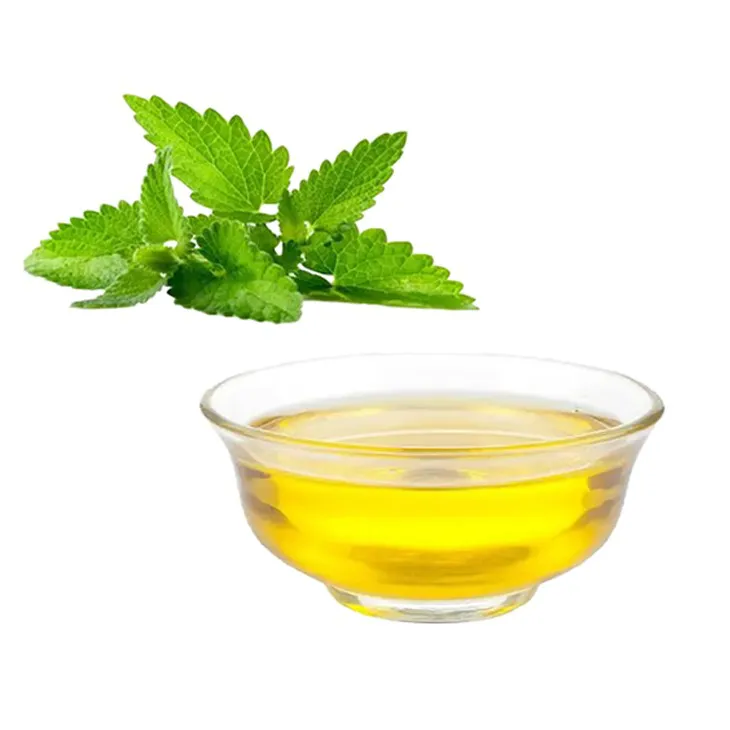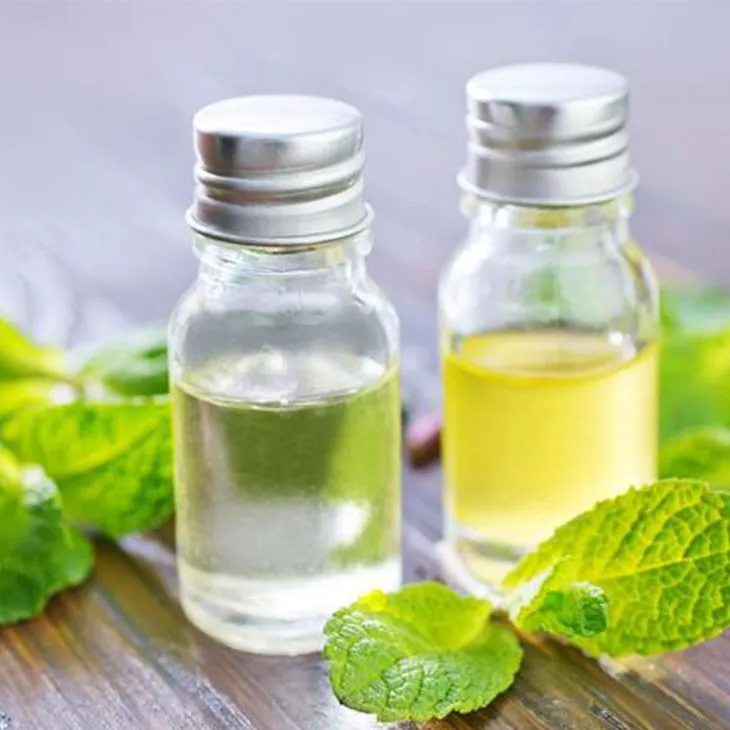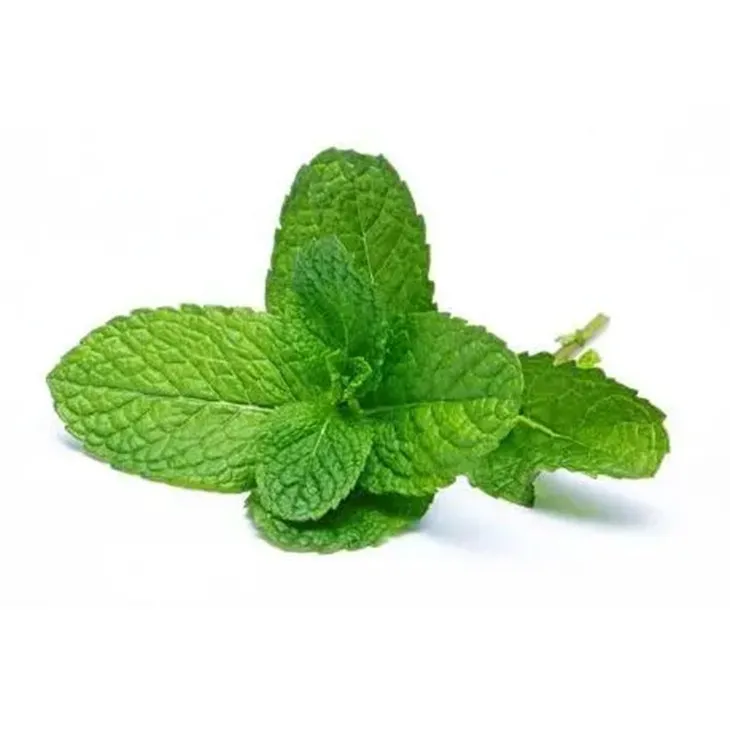- 0086-571-85302990
- sales@greenskybio.com
Supercritical Carbon Dioxide Extraction of Peppermint Oil
2024-11-30

1. Introduction
Peppermint Oil has long been valued for its numerous applications in various industries, including food, cosmetics, and pharmaceuticals. It is well - known for its characteristic refreshing aroma, which is mainly due to the presence of components such as menthol and menthone. Traditional extraction methods for Peppermint Oil, such as steam distillation, have been in use for a long time. However, supercritical carbon dioxide ($\text{CO}_2$) extraction has emerged as a more advanced and efficient technique in recent years.

2. Properties of Peppermint Oil
Peppermint oil contains a complex mixture of chemical components. Menthol is one of the most prominent constituents, which gives peppermint oil its cooling and soothing sensation. Menthone also contributes to the overall aroma and flavor profile. Additionally, there are other minor components that play important roles in determining the quality and properties of the oil. For example, some terpenes in peppermint oil have antioxidant properties, which make it potentially useful in cosmetic products for skin protection.

3. Supercritical $\text{CO}_2$ as a Solvent
3.1. Physical and Chemical Properties
Supercritical $\text{CO}_2$ has unique physical and chemical properties that make it an ideal solvent for peppermint oil extraction. At supercritical conditions (above its critical temperature of 31.1 °C and critical pressure of 7.38 MPa), $\text{CO}_2$ has the density of a liquid and the diffusivity of a gas. This allows it to penetrate into the plant material easily and dissolve the target components effectively.
3.2. Advantages
- Non - toxic: Supercritical $\text{CO}_2$ is non - toxic, which is a crucial advantage over some traditional organic solvents. This makes the extracted peppermint oil safe for use in food and pharmaceutical applications without the risk of solvent residue - related toxicity.
- Non - flammable: It is also non - flammable, reducing the safety hazards associated with the extraction process. This is especially important in industrial - scale production facilities where safety regulations are strict.
- Easy Removal: $\text{CO}_2$ can be easily removed from the final product. After the extraction, by simply reducing the pressure, $\text{CO}_2$ reverts to its gaseous state and can be separated from the peppermint oil, leaving no residue. This ensures the purity of the final peppermint oil product.

4. The Extraction Process
4.1. Preparation of Peppermint Material
The first step in the supercritical $\text{CO}_2$ extraction of peppermint oil is the preparation of the peppermint material. The peppermint plants are usually harvested at the appropriate stage of growth to ensure the highest content of the desired components. The harvested plants are then dried and ground to an appropriate particle size. This step is important as it affects the surface area available for the $\text{CO}_2$ to interact with the plant material.
4.2. Extraction Parameters
- Temperature: Temperature is a critical parameter in the supercritical $\text{CO}_2$ extraction process. Different temperatures can affect the solubility of the components in peppermint oil in $\text{CO}_2$. Generally, increasing the temperature can increase the solubility of some components, but it may also lead to the degradation of certain thermally sensitive components. For example, if the temperature is too high, menthol may start to decompose.
- Pressure: Pressure also plays a significant role. Higher pressures can increase the density of $\text{CO}_2$, which in turn can increase its solvent power. However, increasing the pressure also requires more energy and more sophisticated equipment. A balance needs to be struck between achieving a high yield and minimizing the cost and complexity of the process.
- Flow Rate of $\text{CO}_2$: The flow rate of $\text{CO}_2$ affects the mass transfer rate during the extraction. A higher flow rate can lead to a shorter extraction time, but it may also result in less efficient extraction if the $\text{CO}_2$ does not have enough time to interact with the plant material.
- Extraction Time: The extraction time is another important factor. Longer extraction times may increase the yield of peppermint oil, but it may also lead to the extraction of unwanted components or the degradation of the desired components over time.
4.3. Separation of Peppermint Oil and $\text{CO}_2$
After the extraction, the peppermint oil - $\text{CO}_2$ mixture is sent to a separation unit. As mentioned earlier, by reducing the pressure, $\text{CO}_2$ is easily separated from the peppermint oil as it changes back to its gaseous state. The separated $\text{CO}_2$ can be recycled and reused in the extraction process, which is an environmentally friendly aspect of this method.

5. Optimization of Yield and Quality
- Yield Optimization: To optimize the yield of peppermint oil, a comprehensive understanding of the extraction parameters is required. By carefully adjusting the temperature, pressure, $\text{CO}_2$ flow rate, and extraction time, the maximum amount of peppermint oil can be extracted from the plant material. For example, experimental studies have shown that at a certain pressure and temperature range, the yield of peppermint oil can be significantly increased.
- Quality Optimization: Quality is equally important as yield. The quality of peppermint oil is determined by the composition of its components. By precisely controlling the extraction parameters, it is possible to selectively extract the desired components, such as menthol and menthone, while minimizing the extraction of unwanted components. This ensures that the final peppermint oil product has the desired aroma, flavor, and therapeutic properties.
6. Comparison with Traditional Extraction Methods
6.1. Steam Distillation
Steam distillation has been a widely used traditional method for peppermint oil extraction. However, it has several drawbacks compared to supercritical $\text{CO}_2$ extraction.
- Lower Yield: Steam distillation generally results in a lower yield of peppermint oil. This is because some components may be lost during the long - duration distillation process or may not be effectively extracted due to the limitations of the steam - based extraction mechanism.
- Quality Degradation: The high temperature and long exposure time during steam distillation can cause the degradation of some thermally sensitive components in peppermint oil, such as menthol. This can lead to a change in the aroma and quality of the final product.
- Residue Issues: In some cases, there may be issues related to water residue in the extracted peppermint oil, which may require additional drying steps and can potentially affect the stability and quality of the oil.
6.2. Solvent Extraction
Solvent extraction using organic solvents such as hexane also has its disadvantages.
- Toxic Solvent Residue: The use of organic solvents may leave toxic solvent residues in the final peppermint oil product, which is unacceptable for applications in food and pharmaceuticals. This requires additional purification steps to remove the solvent residues, which increases the cost and complexity of the process.
- Flammability and Safety Hazards: Organic solvents are often flammable, posing significant safety hazards during the extraction process. This requires strict safety measures and special handling procedures in the production facility.
7. Applications of Peppermint Oil Extracted by Supercritical $\text{CO}_2$
7.1. Food Industry
Peppermint oil extracted by supercritical $\text{CO}_2$ is widely used in the food industry. It can be used as a flavoring agent in various products such as candies, chewing gums, and beverages. The high - quality and pure peppermint oil obtained through this extraction method provides a natural and intense peppermint flavor without any solvent - related off - flavors.
7.2. Cosmetics and Skincare
In the cosmetics and skincare industry, peppermint oil has several applications. It can be used for its refreshing and cooling properties in products such as lotions, creams, and body washes. The antioxidant properties of some components in peppermint oil also make it beneficial for skin health, helping to protect the skin from oxidative damage.
7.3. Pharmaceutical Industry
Peppermint oil has been used in traditional medicine for its various therapeutic properties, such as relieving digestive problems and reducing pain. In the pharmaceutical industry, the peppermint oil extracted by supercritical $\text{CO}_2$ can be used in the formulation of drugs and herbal remedies. The purity and high quality of the oil obtained through this method ensure its safety and effectiveness in medical applications.
8. Conclusion
Supercritical carbon dioxide extraction of peppermint oil is a highly promising method that offers numerous advantages over traditional extraction methods. It enables the extraction of high - quality peppermint oil with optimized yield by precisely controlling the extraction parameters. The non - toxic, non - flammable, and residue - free nature of supercritical $\text{CO}_2$ makes it an ideal solvent for this extraction. With the increasing demand for natural products in various industries, the supercritical $\text{CO}_2$ extraction of peppermint oil is likely to gain more importance in the future, providing a sustainable and efficient solution for peppermint oil production.
FAQ:
What are the main advantages of using supercritical CO2 for peppermint oil extraction?
Supercritical CO2 has several main advantages for peppermint oil extraction. Firstly, it is non - toxic and non - flammable, which makes it a safe solvent to use. Secondly, it can be easily removed from the final product, leaving no residue. This ensures the purity of the peppermint oil. Thirdly, it can precisely target the active components in peppermint, like menthol and menthone.
How can the yield and quality of peppermint oil be optimized in supercritical CO2 extraction?
The yield and quality of peppermint oil can be optimized by controlling the parameters of supercritical CO2 extraction. These parameters may include temperature, pressure, and extraction time. By carefully adjusting these variables, the extraction process can be fine - tuned to extract the maximum amount of desired components while maintaining their quality.
What are the active components in peppermint oil that supercritical CO2 can target?
The active components in peppermint oil that supercritical CO2 can target are mainly menthol and menthone. These components are responsible for the characteristic aroma and many of the beneficial properties of peppermint oil.
Is supercritical CO2 extraction a common method in peppermint oil production?
Yes, supercritical CO2 extraction is a preferred method in modern peppermint oil production. Due to its advantages such as non - toxicity, non - flammability, and the ability to precisely target active components, it has become a popular choice in the industry.
How does supercritical CO2 extraction compare to other methods of peppermint oil extraction?
Compared to other methods, supercritical CO2 extraction has distinct advantages. Traditional methods may use organic solvents that can be toxic and leave residues. Supercritical CO2, on the other hand, is non - toxic and residue - free. It also offers better selectivity for the active components, which can result in a higher - quality peppermint oil.
Related literature
- Supercritical Fluid Extraction of Peppermint Oil: Process Optimization and Component Analysis"
- "Advances in Supercritical CO2 Extraction of Essential Oils: The Case of Peppermint"
- ▶ Hesperidin
- ▶ Citrus Bioflavonoids
- ▶ Plant Extract
- ▶ lycopene
- ▶ Diosmin
- ▶ Grape seed extract
- ▶ Sea buckthorn Juice Powder
- ▶ Fruit Juice Powder
- ▶ Hops Extract
- ▶ Artichoke Extract
- ▶ Mushroom extract
- ▶ Astaxanthin
- ▶ Green Tea Extract
- ▶ Curcumin
- ▶ Horse Chestnut Extract
- ▶ Other Product
- ▶ Boswellia Serrata Extract
- ▶ Resveratrol
- ▶ Marigold Extract
- ▶ Grape Leaf Extract
- ▶ New Product
- ▶ Aminolevulinic acid
- ▶ Cranberry Extract
- ▶ Red Yeast Rice
- ▶ Red Wine Extract
-
Cat Claw Extract
2024-11-30
-
Pueraria Lobata Extract
2024-11-30
-
Withania Somnifera Extract
2024-11-30
-
Polygonum Cuspidatum Extract
2024-11-30
-
Centella Asiatica Extract
2024-11-30
-
Lycopene
2024-11-30
-
Licorice Root Extract Powder
2024-11-30
-
Panax Ginseng Leaf Extract
2024-11-30
-
Hericium erinaceus extract powder
2024-11-30
-
Tongkat Ali Extract
2024-11-30





















